スポンサードリンク ( Sponsored link )
Colorful “Shibai-e Byobu” Along the Shrine Approach
You may remember the “Ekin Festival ” in Akaoka, Kochi—a unique summer event where dramatic folding screens called shibai-e byobu line the streets and glow under candlelight.
But did you know that Akaoka is not the only place where you can see Ekin’s folding screens during summer?July 24 at Asakura Shrine in Kochi City.
▶ Looking for the Ekin Festival in Akaoka? Check out our full guide here!
アートおへんろ
What Is the Ekin Festival? Discover Bloody Art and Kabuki Folding Screens in Akaoka, Kochi
Blood-splattered art lit by candlelight—have you heard of the Ekin Festival? Every year on the third Saturday and Sunday
What Is Asakura Shrine?
Asakura Shrine is located in the Asakura area of Kochi City. Its exact founding date is unknown, but the shrine is traditionally associated with Empress Saimei , a ruler from ancient Japan.
In 660, after the fall of Baekje to Tang China and Silla, Empress Saimei is said to have moved to this region to prepare for a military campaign to support Baekje. According to some accounts, she passed away here (though there are several theories).
Empress Saimei (594-661)The shrine’s current main hall was rebuilt in 1657 by Tadayoshi Yamauchi, the second feudal lord of the Tosa Domain. Today, it’s designated as an Important Cultural Property of Japan .
One of the hall’s highlights is the artwork painted on its wooden walls. These paintings were restored around 2020 and are now beautifully preserved.
And every year on July 24, this shrine hosts its summer festival—Ekin’s dramatic folding screens are displayed throughout the grounds .
The location of Asakura Shrine is here.
TOC
スポンサードリンク ( Sponsored link )
So… Who Was Ekin?
Kinzo Hirose (1812-1876) Widely known by his nickname Ekin , he was an influential painter active at the end of the Edo period .
Ekin trained in the Kano school and even became an official painter for the Tosa Domain . However, in his late twenties, he became involved in an unexpected scandal and lost his position.
But that didn’t stop him.as a town painter , creating many works that remain today—especially his famous shibai-e byobu , folding screens depicting dramatic kabuki scenes.
Akaoka’s Ekin Festival is the most famous event showcasing Ekin’s dramatic folding screens.Asakura Shrine hosts its own summer festival, displaying a different collection of screens that has been preserved locally.
Akaoka Collection : “Hana-goromo Iroha Engi – Scene of the Eagle”A Gate of Art: Folding Screens Displayed on the Emadai
Across Kochi Prefecture, folding screens created by Ekin and his students are still carefully preserved. Every summer, many local festivals bring these dramatic screens out for public display.
In Akaoka, the famous Ekin Festival features screens placed under the eaves of local houses and lit by candlelight.emadai . The screens are set high above the pathway, almost like a decorative gate .
Visitors walk beneath the emadai as they approach the main shrine.
Now, let’s take a look at some of the works displayed at this summer festival.
Featured Work
Twin Sons and the Sumida River The Suicide of Sota the Human Trafficker —Two-panel folding screen, color on paper
About This Work
Story Summary
The tale takes place along the Sumida River in the late Heian period.
For years he saved money as a way to make amends to his former lord—he needed just ten more ryo to reach the full 10,000 when disaster struck.
One day, Sota deceives and captures a young boy named Umewaka. The boy fights desperately, and in the struggle, Sota ends up killing him.
Overwhelmed with guilt, Sota takes his own life. His soul then transforms into a tengu , a supernatural mountain spirit. In this new form, he tries to atone for his crime by searching for Umewaka’s missing twin brother, Matsuwaka.
What the Painting Shows
Ekin captures the exact, dramatic moment of Sota’s suicide.
Watching this tragic scene are his wife Karaito and Yoshida family retainer Takekuni.
Look closely and you’ll notice even more detail:
Ekin’s Signature “Blood Red”
cinnabarJJ Harrison One of the most striking features is the vivid red flowing from Sota’s wound.
This color, called “chi-aka” (blood red) , is made from cinnabar, a natural pigment containing mercury sulfide. In Tosa, this red was also considered a protective color and has long been familiar to local people.
Despite the tragic and violent subject matter, the overall painting feels both dramatic and mysterious.theatrical, story-driven art .
It’s a perfect example of what makes shibai-e byobu so compelling.
Funa Benkei (Benkei in the Boat)Two-panel folding screen, color on paper
About This Work
Here is another powerful piece, inspired by “Funa Benkei,” a famous story still performed today in Noh and Kabuki theater.
Story Summary
After defeating the Taira clan, Minamoto no Yoshitsune becomes a hero.
Yoshitsune flees the capital with his loyal retainer Benkei and others. They reach the port of Daimotsu-no-Ura in Hyogo Prefecture, hoping to escape westward by boat.
“This storm must be caused by spirits!” they cry.Taira no Tomomori , who charges toward Yoshitsune with a huge halberd.
Just as Yoshitsune prepares to fight back, Benkei raises his prayer beads and chants a powerful Buddhist prayer.
Ekin’s Version of Funa Benkei
Ekin brings this dramatic scene to life with bold, energetic brushwork.
Tomomori’s pose, in particular, looks like a perfect kabuki mie , a dramatic freeze-frame pose used on stage. It is strikingly cool and full of presence.
Ekin doesn’t just illustrate the storyline.vivid colors, dynamic composition, and expressive movement to grab the viewer’s attention. It’s a showcase of everything that makes Ekin’s art so theatrical and unforgettable.
The Castle of the Genji Advance Guard at Ômi Moritsuna’s fort —Two-panel folding screen, color on paper
About This Work
This dramatic screen is based on a classic story set in the Kamakura period—a tragic tale about two brothers forced to fight on opposite sides.
Story Summary
During the Kamakura period, two brothers from the Sasaki clan, Sasaki Moritsuna and Sasaki Takatsuna , find themselves on opposing sides of a major conflict.
Moritsuna’s forces capture Koshirō , the young son of his brother Takatsuna, and take him as a hostage.Hōjō Tokimasa , wants to use the boy to pressure Takatsuna into switching sides.
After consulting with his mother, Mimyo , Moritsuna makes a heartbreaking decision: Koshirō must commit ritual suicide to protect his father’s honor.
“Takatsuna has been killed.”
Tokimasa arrives carrying a bucket with a severed head and orders Moritsuna to confirm that it belongs to his brother.
“Father, I will follow after you!”
The head inside the bucket was actually fake.“There is no doubt. This is Takatsuna’s head.”
Moritsuna had tried desperately to protect his brother’s honor.But in the end, in an ironic twist, it is he who chooses to betray his own lord — a fate brought about by the very loyalty that binds the family.
The Revenge at Igagoe — Okazaki —Two-panel folding screen, color on paper
About This Work
The Revenge at Igagoe tells the true story of Kazuma Watanabe, a samurai of the Okayama domain, who teams up with his brother-in-law, Mataemon Araki, to avenge Kazuma’s younger brother by hunting down his killer, Matagorō Kawai.Three Great Vendettas ,” alongside the Soga Brothers and the Forty-seven Rōnin. It was originally performed as a jōruri puppet play.
The full story unfolds over ten acts, following the avengers from Kamakura to Iga-Ueno—a kind of samurai-era “road movie.”
Story Summary — Drama on the Road to Revenge After nearly being arrested at a checkpoint, Mataemon is saved by Kōbei, an official who—unbeknownst to many—is also his former fencing teacher.
At that moment, Mataemon’s former wife, Otani, appears.
Torn between duty and compassion, Mataemon’s harsh decision reveals the devastating resolve expected of a samurai.
Ekin’s Snow Scene and the “Hidden Signature” Ekin depicts the exact moment when Otani, barely able to stand in the snow, pleads for a place to stay.
Another striking feature is the snow itself—rare in Ekin’s work. The scattered white accents enhance the vivid colors of the scene.
Take a close look at the lantern held by the night watchman on the left.
While it may look playful, some say this habit comes from a painful incident in his youth, when a forged signature was added to one of his copied works.
” 雀翁 ” (Jakuō)
Shoryu KawadaSakura Sōgorō: The Farewell Scene Shirokiya “
asakura jinja shouryu sakurasougorou kowakare no dan
asakura jinja shouryu shirokiya
About Kawada Shōryū (Tap or Click)
Shoryu Kawada (1824-1898) Kochi preserves not only Ekin’s dramatic folding screens but also works by other artists of the same period. Shōryū Kawada .
Like Ekin, Shōryū was born in Tosa, and the two were said to be close.Four Beauties of the Seasons , and the inscription on Ekin’s tombstone was written by Shōryū himself.
Their artistic styles also differed.Sakura Sōgorō: The Farewell Scene .
What’s most surprising is how little information exists about Shōryū’s work.
That sense of unexpected discovery is part of what makes Kochi’s summer festivals so special.
People of Kochi and the Art of Ekin Ekin’s folding screens were never meant to be quiet decorations inside a home. Even though folding screens were originally used as indoor furniture, the vivid colors and dramatic scenes in Ekin’s theater screens make it clear that they were created for summer festivals .
In the past, each neighborhood brought its own screens to the local shrine, where a competition called ekurabe The winner was believed to receive good fortune for the coming year , almost like a form of divination. Because everyone wanted their neighborhood to win, they asked the most skilled painters for help. Many commissions naturally went to Ekin, who was also an official painter for the Tosa domain. As a result, his works remain scattered across Kochi today.
Although the competition no longer takes place, the custom of displaying theater screens on summer nights is still alive. At the Asakura Shrine Summer Festival, for example, local groups bring their screens on the evening of July 24, set them into wooden emadai frames, and line them along the shrine’s path.
What surprises many visitors is how these screens are displayed. Paper artworks that would normally be kept under strict museum control are exposed to the warm night air. The installation is done by local residents themselves, which sometimes leads to small mishaps — I even saw a screen that looked like it was about to fall off its emadai . From a conservation standpoint, it’s certainly not ideal. But if the screens were locked away behind museum glass, the spirit of the festival would surely disappear. These works have survived precisely because the community has continued to use them, protect them, and keep them alive.
The emadai frames are consumable items that eventually wear out.
With hope, this tradition will continue for another hundred years, allowing future generations to experience Ekin’s theater screens not in a museum, but on a living summer night.
(Reference video: Koichi Sansan TV, 2021. Link provided in the original.) https://www.youtube.com/watch?v=Spcqe52FH8Y
VIDEO
References
Ekin: Radiant Darkness , Kochi Prefectural Museum of Art, Gram Books, 2012Masanori Kagioka, Yuri Nakaya, Megumi Yokota. Ekin: A Rare Genius Who Illuminated the Darkness . Tokyo Bijutsu, 2023
Related Article Read more about Akaoka’s Ekin Festival here.
アートおへんろ
What Is the Ekin Festival? Discover Bloody Art and Kabuki Folding Screens in Akaoka, Kochi
Blood-splattered art lit by candlelight—have you heard of the Ekin Festival? Every year on the third Saturday and Sunday
スポンサードリンク ( Sponsored link )

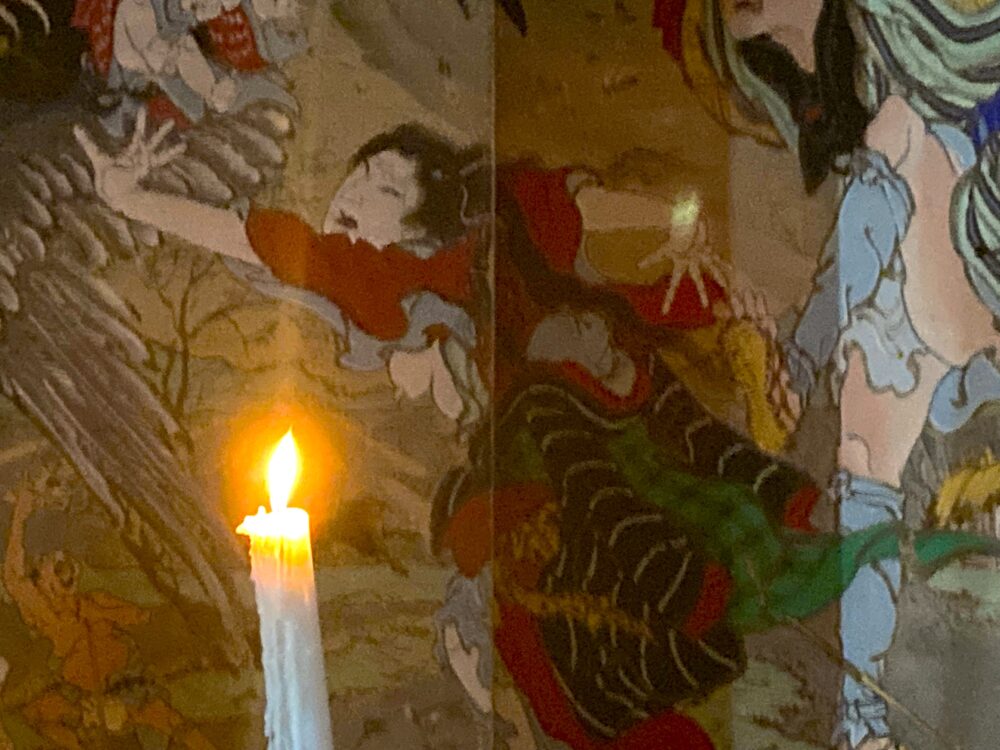
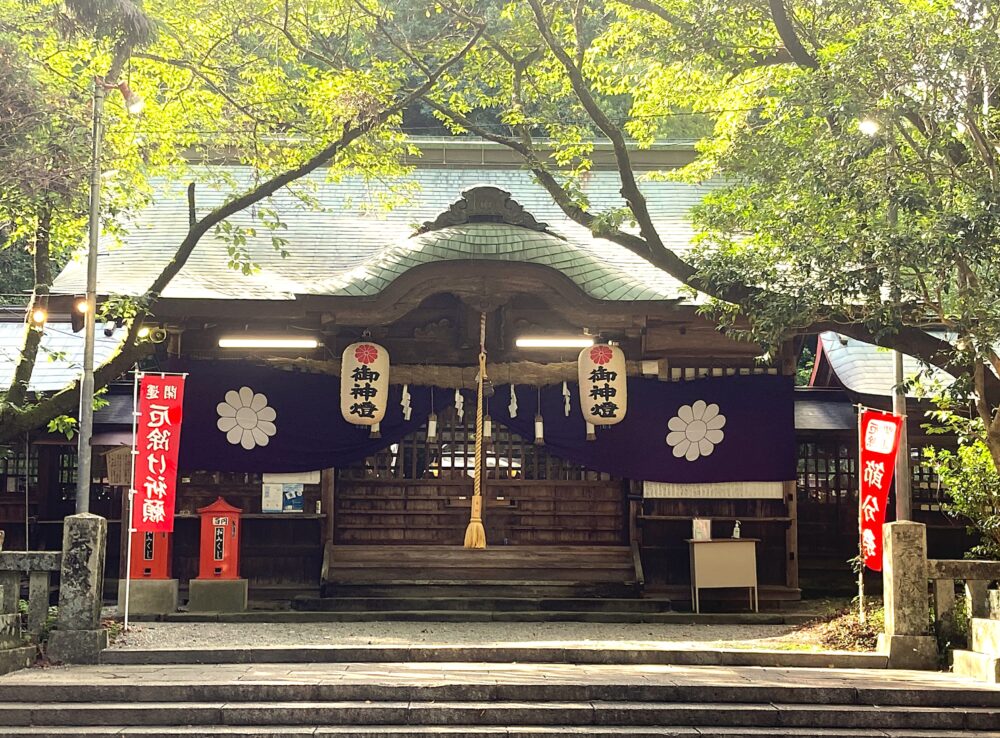
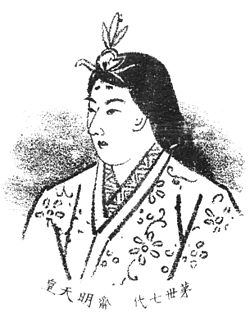
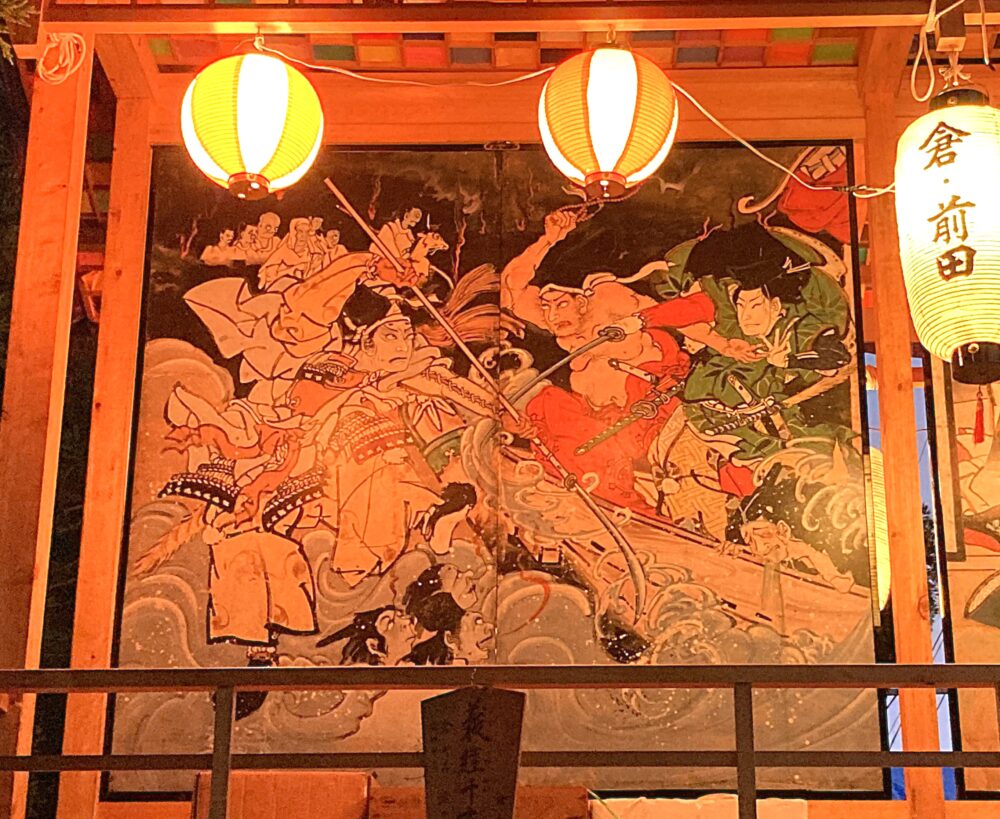
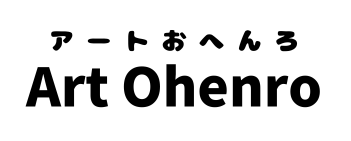




Comments